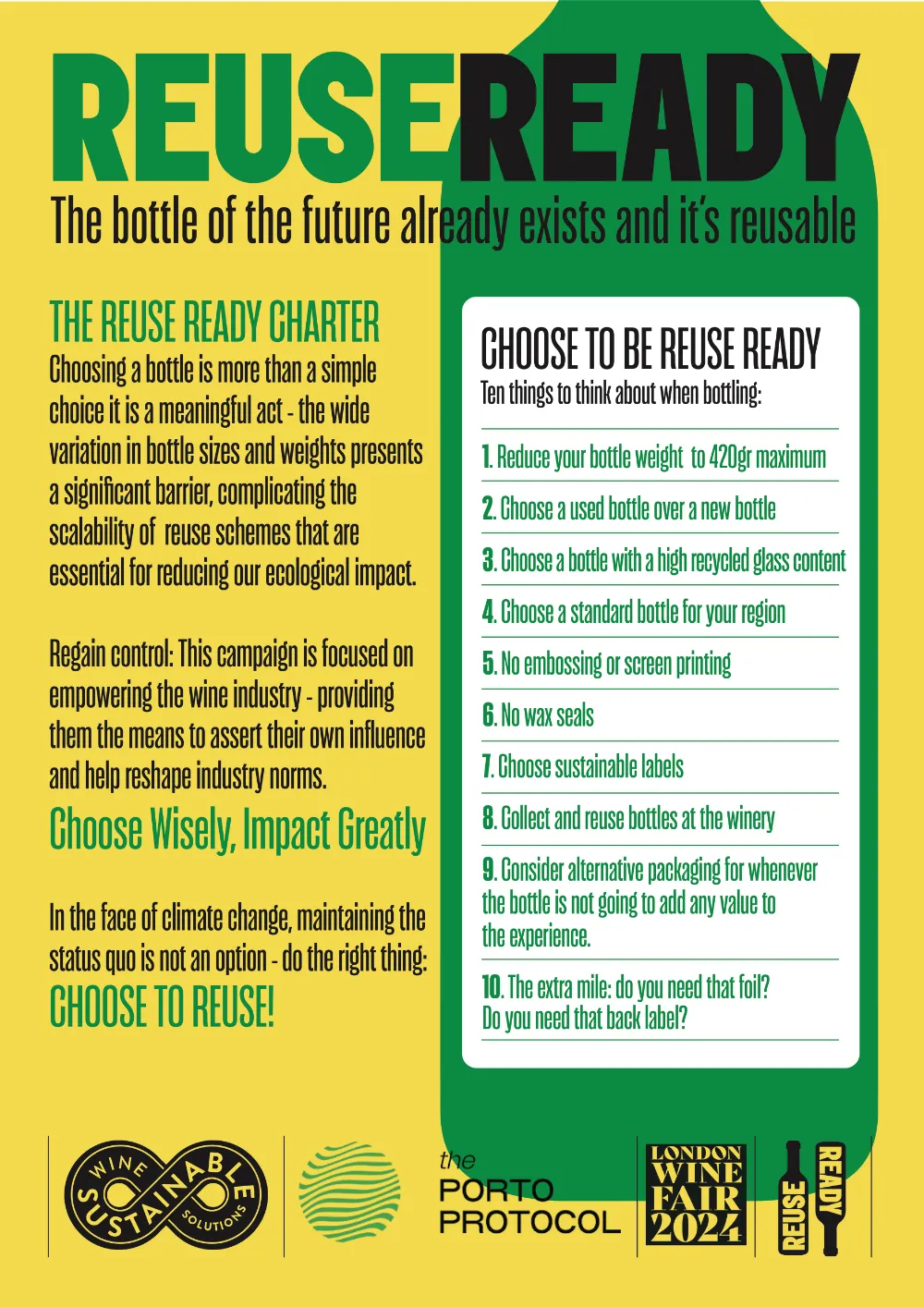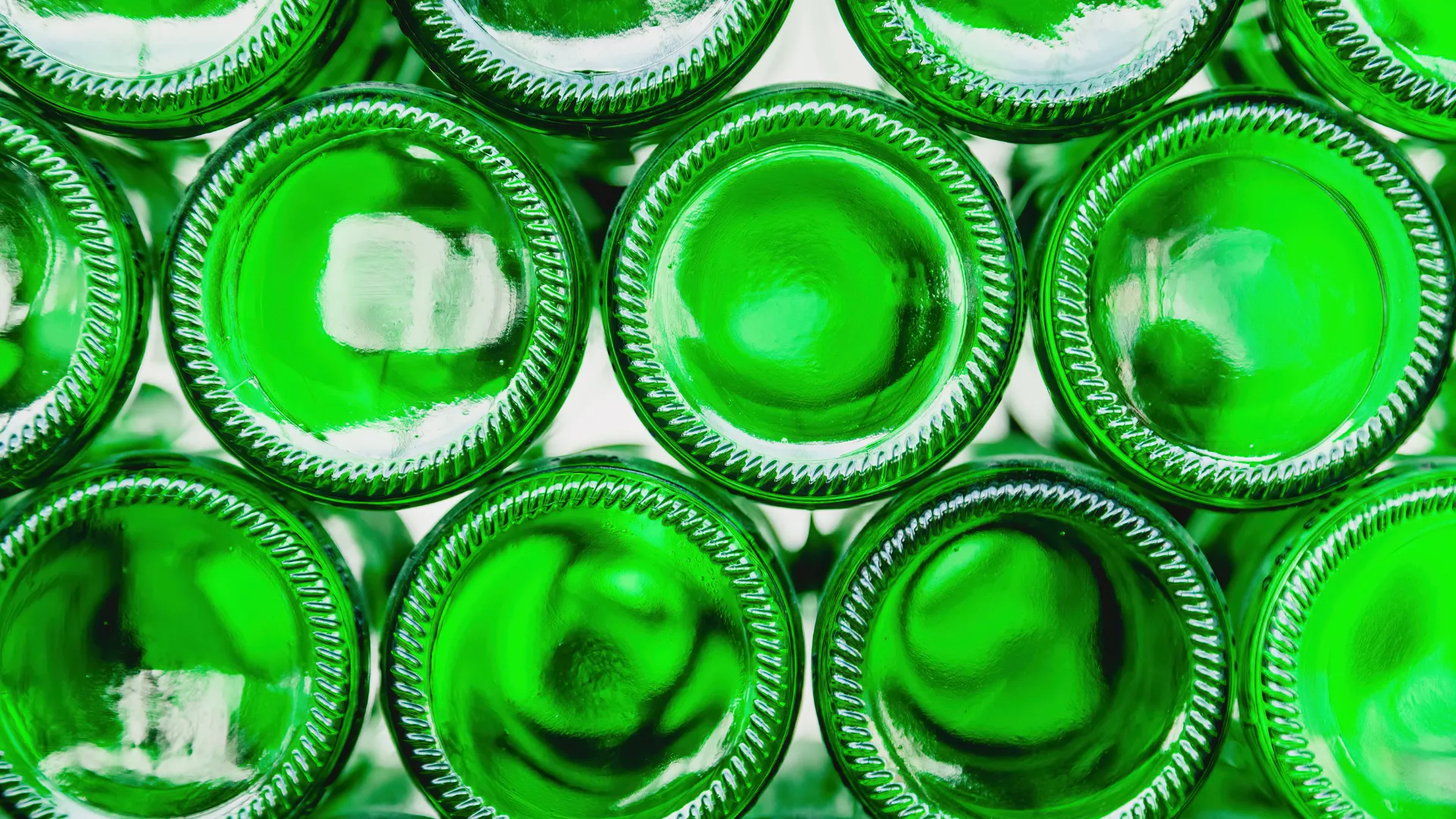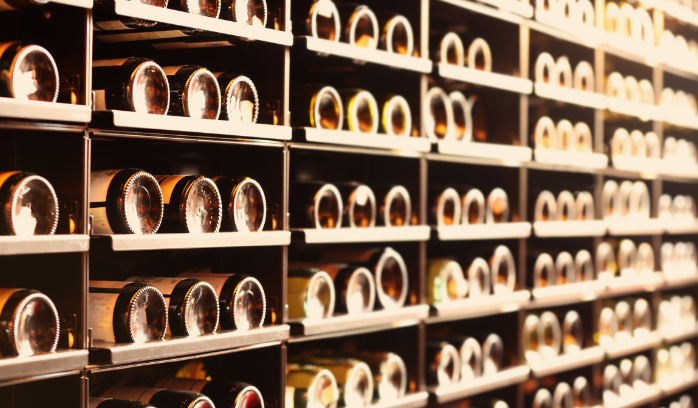

Letter to Glass Bottle Manufacturers
On behalf of your biggest customer the global wine industry, including vintners, distributors, and advocates for sustainability, we address a significant challenge that affects both our environmental impact and operational efficiency: the current lack of standardisation in wine bottle dimensions and durability.
In 2015 international world leaders signed the Paris Agreement to cut carbon emissions to zero by 2050. It is imperative that the wine industry, dependent on a stable climate, meet these goals as well. Bottle reuse is the only possible path to meeting zero emissions goals.
A research project initiative at the 2023 London Wine Fair instigated by London Wine Fair, The Porto Protocol and Sustainable Wine Solutions has shown that on a sample of 1,017 bottles, 947 were different; technical differences accounted for 98% of this difference and 2% due to individual choice by the winery (such as embossing).
The shift toward environmental sustainability demands a move away from single-use glass, which represents 35% of the total footprint of a bottle of wine, to more robust reuse systems. On the other hand, reusable glass offers the greatest potential to reduce environmental impacts: reusable glass bottles produce 85% fewer carbon emissions than their single-use counterparts; 75% fewer carbon emissions than plastic (PET); and 57% fewer carbon emissions than aluminium cans (Zero Waste Europe).
The needle is shifting rapidly, and there is now a global consensus that reusing should become the gold standard.
“As glassmaking experts, we cannot afford to be smug about producing an infinitely recyclable material. That’s a great starting point for our industry. But glass is only sustainable when it is reused when and wherever possible and does in fact get recycled.” - Michael Giannuzi, CEO of Verallia (Verallia White Book).
No gain, all pain: Technical differences do not add anything to the experience of the bottle itself and the wide variation in bottle sizes and weights presents a significant barrier, complicating the scalability of schemes that are essential for reducing our ecological impact. In the current chaos of managing numerous bottle types, the private sector is hesitant to enter the market, as navigating the supply chain feels akin to finding a needle in a haystack.
With global governments increasingly advocating for reuse systems, the wine industry is further committed to minimising waste and enhancing reusable practices.
Recycling is not enough or not at all (as in the case in the US). The UK consumes on average 1.77 billion bottles of wine per year, with all of the glass bottles being single use. Currently only 68% of the UK glass wine bottles are recycled with the remaining downgraded to be used in aggregates disposed of in landfill. With only 30% of new bottles made from recycled glass.
Compared with the manufacturing of new bottles, washing bottles has the potential to reduce primary energy consumption by 76%, emit 79% fewer greenhouse gases and save 33% water compared to recycling.
A reused bottle emits only 98 grams of CO2 compared to 474 grams for a single-use bottle (La Wine Tech White Book, Feb 2024).
Lightening up is not enough. The bottle must be both lightweight and reusable.
Sand is the second most used resource worldwide after water: A 2022 U.N.Environment Programme (UNEP) report called for urgent action to avert a "sand crisis", including a ban on beach extraction as demand surges to 50 billion tonnes a year amid population growth and urbanisation. Sand is the most exploited natural resource in the world after water, but its use is largely ungoverned, meaning we are consuming it faster than it can be replaced by geological processes that take hundreds of thousands of years (10 Strategic Recommendations to Avert a Crisis, 2022).
Glass is the easiest material to wash and transitioning to reuse systems is feasible, as evidenced by successful regional and national projects in the EU—such as Austria’s Styria region, reWine in Catalonia, Réseau Vrac et Réemploi in France, Sustainable Wine Solutions in the UK, and initiatives in Finland and, Revino in the USA to name only a few. These projects, primarily focusing on B2B or a blend of B2B/B2C models, are paving the way toward adopting standardised bottles to facilitate consumer recognition.
It is anticipated that linear (recycling) and circular (reuse) systems will coexist for some time as the industry transitions and organises a circular supply chain. However, these systems should complement rather than conflict with each other. In this spirit, prioritising the bottle's reusability is a critical step towards enabling a sustainable shift toward "reuse systems", a cornerstone of the circular economy. Under the same token it is more likely than not to imagine that in the near future recycling infrastructure and logistics will be put to the service of reuse systems. However that cannot become a reality until technical standardisation is reached.
The survival of the glass bottle as the preferred container for wine hinges on its evolution from single-use to reusable. Most wines are consumed within a year of production and do not require the sophisticated benefits that the glass bottle offers. The ongoing preference for glass is largely due to customer perceptions and the traditional allure associated with it.
But that could change rapidly. With global wine industry figures such as Jancis Robinson MW OBE campaigning for lighter bottles and alternative formats for everyday wines, with younger generations increasingly demanding low-impact packaging, a tipping point could be around the corner. Already PET bottles have an increasing presence on supermarket shelves; there is a real risk of the bottle losing its central stage status.
The reusable bottle is the silver bullet that will ensure that the glass bottle keeps its status as the container of choice for years to come.
Developing a system that allows for the reuse of existing bottles provides a foundational step towards establishing a durable supply chain designed for bottle reuse over the next century. Starting with the bottles we already have is both practical and essential.
Continuing without technical standardisation while each bottle manufacturer independently develops their own reusable solutions is inefficient and unsustainable. Without a unified approach, the industry risks duplicating efforts and creating fragmented systems that hinder broad adoption and effectiveness.
A dual-track strategy is essential: firstly, by minimising technical disparities to boost private sector investment in cleaning and logistics infrastructure; and secondly, by focusing on product design and innovation to develop lightweight and reusable bottles.
From the World Economic Forum to the Ellen MacArthur Foundation, everyone agrees that the reuse economy represents a multi trillion dollar opportunity. The glass industry holds a pivotal role in transforming the way we approach bottle usage. With substantial resources at their disposal, manufacturers have the potential to shift from traditional bottle production to offering bottles "as a service". This model would not only emphasise reusability and sustainability but also align with the growing demand for more environmentally friendly practices. This transition could set a new standard in the industry, encouraging both consumers and businesses to rethink how they use and value glass packaging.
We propose the following actionable steps:




Did you know that Packaging is the element that contributes more to the carbon footprint of wine?

What can a producer do to embrace circularity?

“Where do I start?” is a question companies ask themselves when starting a sustainability strategy, and certainly the most difficult to answer.